
Few people have made the transition from elite sportsperson to multi-faceted entrepreneur with as much skill, flair and success as Formula 1 driver David Coulthard. Winner of thirteen Grands Prix, Coulthard has also made his mark in hotel ownership, property, consultancy, film production and most famously media work, as lead TV pundit. In this book Coulthard opens the doors to the secretive world of F1 and reveals in simple, entertaining and utterly compelling terms how he has been able to master this mind-boggling variety of disciplines by applying the skills honed from his years at the top of the world’s most demanding motorsport. By recounting his own stories, and combining them with first-hand experience of stellar individuals such as Michael Schumacher,Ron Dennis, Sir Frank Williams, Christian Horner and Sebastian Vettel, Coulthard provides a fascinating fly-on-the-wall insight into F1 but at the same time offers an invaluable guide to the business of sport and the sport of business.
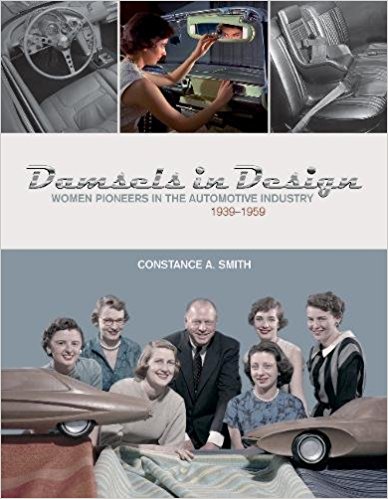
In the mid-1950s, an innovative group of women at General Motors (dubbed the Damsels of Design by marketers) and their counterparts at Ford, Hudson, Studebaker, Packard, and Tucker changed automotive history forever. Read the untold story of the women who excelled in the Mad Men era of automobile and industrial design. Recruited by top CEOs at automotive companies, they developed many of the products we take for granted today. Learn about Helene Rother, who designed the instrument panel, hardware, and seat construction for midcentury Cadillacs; Elizabeth Thatcher Oros, the first female trained in industrial design; and discover the history behind the child safety seat latch and car doors with lights. An extraordinary story of exceptional women, Damsels in Design sheds light on those who have too long been in the shadows.
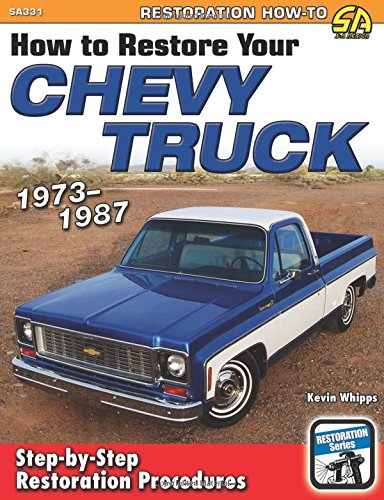
Whether your 1973-1987 Chevy truck is a regular, super, or crew cab with a short or long box, this restoration guide provides the pertinent information and instruction to restore your squarebody truck to original condition.
Seasoned truck magazine writer Kevin Whipps explains real-world techniques for restoring classic Chevrolet and GMC trucks at home. In How to Restore Your Chevy Truck: 1973-1987, you are shown how to comprehensively inspect, properly assess, and accurately budget your restoration project. You are also guided through each major portion of truck restoration, including the engine, suspension, chassis, bodywork, paint, brakes, steering, transmission, driveline, electrical system, interior, and more. Special coverage is dedicated to the replacement of body panels and repair of the box, cab, and other body parts. When pro-caliber bodywork has been performed, you have an excellent foundation for the paint, and in turn, you’re shown how to prep, shoot, and buff the paint job. As an on- and off-road utility vehicle, Chevy/GMC trucks have been towing, hauling, and operating in a variety of conditions. After all of these years of hard use and exposure to harsh conditions, many of these extensively used trucks are in desperate need of restoration.
When Chevy released its third-generation C/K pickup trucks, the stout and sturdy performers captured the attention of Chevy and GMC truck enthusiasts. As a result, millions were sold during their 18-year production run. The new cab design featured rounded windshield corners, a rounded cab roof, and sloped and rounded doors, so they were called the “rounded-line” trucks by General Motors. Enthusiasts, however, didn’t agree. Because of the overall squarer appearance of the trucks, they were soon called the “squarebody” by enthusiasts and journalists alike. Although the older Chevy/GMC pickups are more exclusive, the third-generation pickups are plentiful, increasing in collector value, and, fortunately, they have parts that are readily available.
Chevy/GMC trucks are extremely popular as stock restorations, fast street trucks, and off-road-duty trucks. But before you can build a specialty truck, you need to have a solid, reliable, restored truck. This book provides the invaluable information and step-by-step instruction to return these trucks to their original glory. An authoritative and comprehensive restoration guide for the 1973-1987 Chevy/GMC trucks has not been available until now.
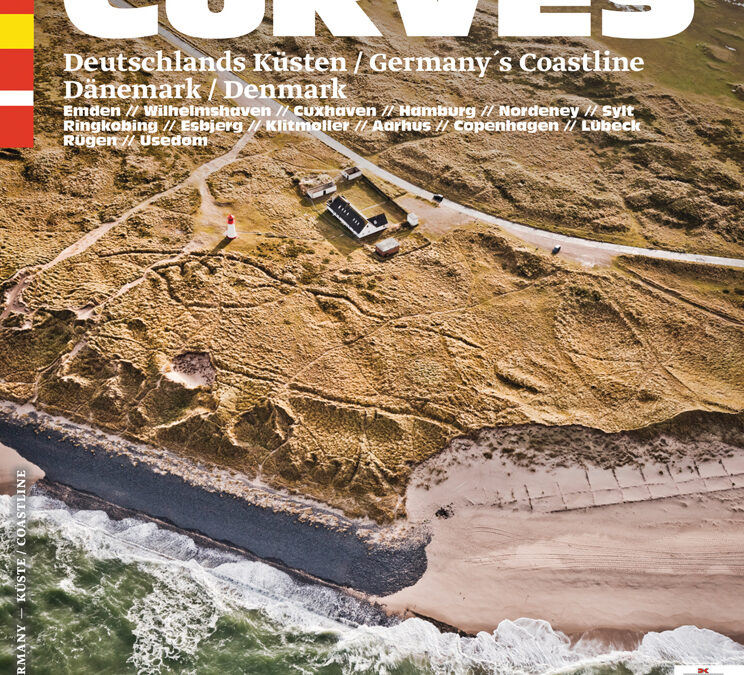
You do not need to go to California for scenic coastal roads or relaxed cruising – not when you have that right on your doorstep in Europe. Instead of chewing gum, eating burgers and drinking Coca-Cola, your travelling companions will experience liquorice, tea and shrimp rolls – and, of course, Porsche.
In the latest Curves volume, Stefan Bogner travels the German coastline from von Emden to Hamburg, visits the North Frisian island Sylt, and takes a trip to Denmark. From Klitmoeller he goes to Copenhagen and Lübeck. The journey comes to an end in between seaside resorts and chalk cliffs on Rügen, an island in the Baltic.
Text in English and German.

From 1997, traditional four-wheeled Morgans were modernized with superformed aluminium wings, a stainless steel bulkhead, stainless exhausts, and alterations to the body tub that provided longer doors, an increase in interior width, and a roll hoop under the dashboard. This new book provides practical advice on choosing, running and even modifying one of these exceptional cars, including full technical specifications of each model since 1997. The book also covers: buying your first Morgan, and the variations available, including hoods, seats and bumper options; making the best of the cockpit area and optimizing comfort; staying dry in the rain and protecting the bodywork from wear and damage;·choosing and making best use of accessories; details of Morgan suspension, the practicalities and the modifications available; building and fitting an undertray and additional storage space; service and maintenance for the home mechanic and finally it includes a practical guide to touriing holidays in a Morgan.

SOLD OUT AWAITING PUBLISHER RE-PRINT
In the late 1970s, the problem facing any manufacturer taking part in the World Rally Championship was that the rules kept being changed at short notice. This book looks at the solutions found for Lancia’s rally car, the 037, and takes the reader through the new rules that all potential contenders would have to consider if they wanted to win rallies at World Championship level.
Lancia’s Rally was developed quickly to deal with the then-dominant Audi Quattro. The reasons it succeeded are featured here, along with an in-depth, behind-closed-doors look at the development of the car, with the close help and cooperation of its designer and chief engineer, Ing. Sergio Limone.
Here you can read how he decided on the basic configuration of the car, what the rules would allow, and how the project unfolded in total secret at Fiat’s various test tracks and centres in and around Turin, overlaid with rumour and counter-rumour as the world’s motoring press tried to make sense of what little knowledge it had of the project’s progress. In addition, Ing. Limone’s own photographs from areas never accessed by the public tell their own story. The focus then moves to the world of top-level rallying, with all the associated glory and headaches. Accompanied by stunning photography and insights from team members, we follow the small and nimble 037s, as the cars have become popularly known, as they head out to take the World Rally Championship for Makes in 1983 and innumerable wins throughout the world. In addition, there are tests of various key examples of the cars, and appendices of events and chassis used. This book is illustrated with 250 stunning and rare rally action photos.
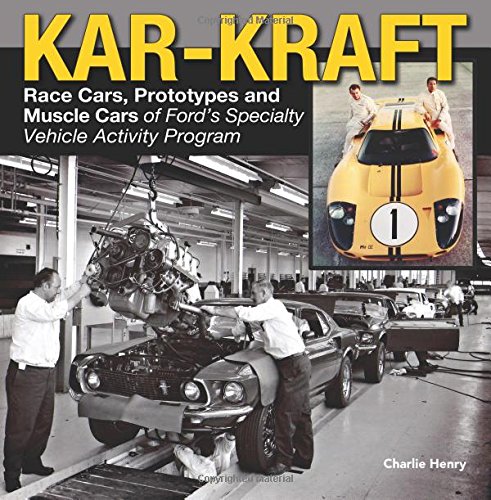
The story of Kar-Kraft began, as did many others in the automotive industry, with an axe to grind. In 1963, Ford was seriously interested in purchasing Ferrari. Ferrari was a legendary brand with considerable success in racing, and Ford saw the acquisition as a great way to be instantly successful in the racing arena. When Enzo Ferrari realized that Ford would not give him complete control of the racing program, he backed out of the deal late in the process. Ford had spent millions in vetting and audits, which then set in motion a vengeful response against Ferrari. The result was the unthinkable: Ford beat Ferrari at Le Mans.
Ford wanted to become competitive quickly, but it did not have the race history or resources in house. To remedy the situation, Ford searched the U.K. for an independent company to help accelerate its race car development. It first settled on Lola Cars and set up Ford Advanced Vehicles. Later, Ford brought its LeMans effort to the U.S. and the Kar-Kraft relationship was established. Although Kar-Kraft was technically an independent company, it really only had one customer: Ford Special Vehicles. Kar-Kraft’s story doesn’t begin and end with the GT 40 that took the win away from Ferrari at Le Mans. Ford expanded upon the program and organized an all-out assault on racing in general. Cars were prepared for Trans-Am, NASCAR, NHRA, and Can-Am competition. Street versions of the Boss 429 were assembled under its roof. And fabled prototypes including the LID Mustang, Boss 302 Maverick, and Mach 2C were all assembled in Ford’s contracted race shop. And then, out of the blue, its doors closed for good on a cold day in 1970.
History tells us that Ford won Le Mans, the Daytona 500, and the Trans-Am championship. But it doesn’t tell us how this was accomplished. Author Charlie Henry (a former Kar-Kraft employee) has enlisted the help of many of his former co-workers to bring you the very first book ever published on Ford’s all-encompassing special projects facility, Kar-Kraft.
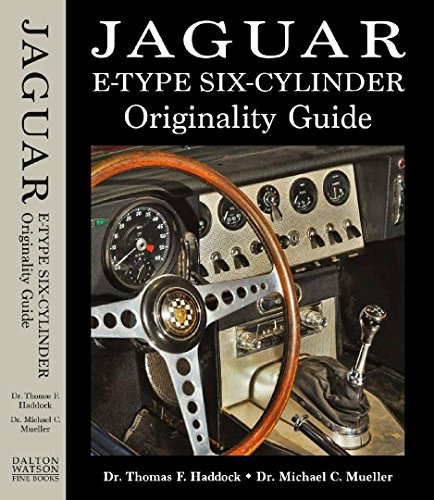
This book on Jaguar E-type originality is based on research spanning almost five decades, and Drs. Haddock and Mueller include extensive new information from an exhaustive four-year examination of the Mueller collection of over fifty E-types. As such, the book is archaeological in nature, based more on observations of cars than on factory publications or other literature. The examination of principally un-restored cars, many partly or completely disassembled and still retaining their original configuration, permitted discovery of much detailed information not reported before. The large volume of data used in the compilation of this work permitted statistical analysis of production changes that would be impossible with a smaller data-set. It significantly advances the understanding of the original configuration of these remarkable cars. A few of the many topics treated in the book are: – Variations between early and late E-type Moss transmissions – An analysis of engine block and head part numbers and configurations, especially the complex and numerous variations of 4.2-liter engine blocks – A review of the myriad of small sheet-metal variations in the tub, bonnet and doors, especially the subtle changes in coupe bodywork in early in 3.8-liter E-type production – Hidden markings on instruments – Review of the subtle variations in the early cooling fan motors – Coupe sun-visor evolution – Markings and tags on carburetors – Markings on the various tires originally supplied on E-types
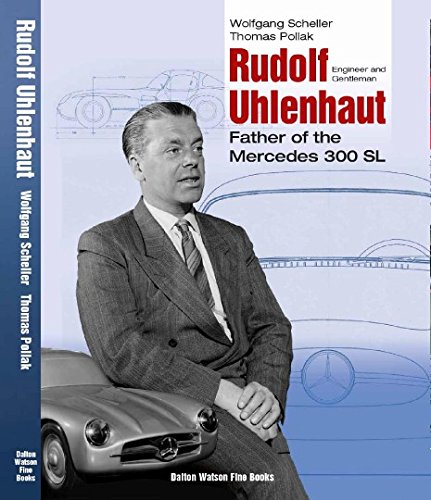
Born 1906 in London as the son of an English mother and a German father, Rudolf Uhlenhaut was an engineer and designer for Daimler-Benz. He became famous for his achievements regarding the Silver Arrows, the 300 SL with the famous gull wing doors, the legendary Mercedes-Benz 300 SLR, known as the “Uhlenhaut Coupé” and the various experimental C 111 versions well-known for several speed records. Uhlenhaut joined Daimler-Benz in 1931 after finishing his studies of mechanical engineering in Munich. In 1936 he took over as head of the racing department and conducted the Silver Arrows and Rudolf Caracciola to their 1937 European championship. Based upon the 300 SL “Gullwing”, initially a thoroughbred racing sports car, he created the road versions W198 and the smaller open-topped W121, both launched at the International Motor Sports Show in New York 1954. Though Uhlenhaut never owned a car of his own, his official company car, a 300 SLR with a top speed of 290 km/h became famous as the Uhlenhaut Coupé – the fastest car of its day authorized for road use! This first ever comprehensive biography of Rudolf Uhlenhaut, illustrated with many previously unpublished photographs, depicts his life and technical achievements, presenting a complete compilation of all the patents he filed and exploring their significance. It also draws a vivid picture of the person behind the technical innovations and tries to explore his character and motivation.
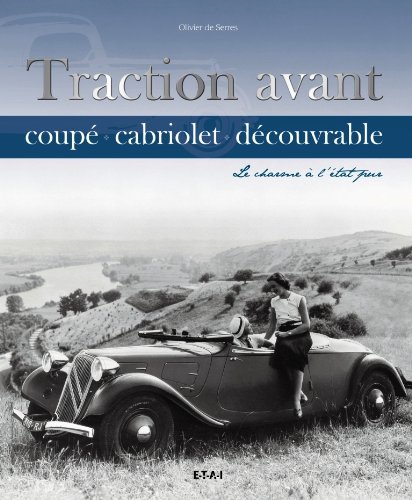
Traction Avant coupé, cabriolet, découvrable : Le charme à l’état pur
Among the biggest myths of the automobile, the Citroën Traction Avant with two doors, cabriolets and coupes (roadsters and faux-cabriolets according to the period names) occupy a place of choice. Indeed, endowed with a capital of seduction intense and enigmatic, but especially absolutely intact, this car with indisputable charm struts proudly alongside machines much more luxurious or more powerful. Even at a time when a 11 HP Traction was trading for a handful of cherries, the roadster inevitably earned respect. Its image and its harmonious forms remain associated with the countless black-and-white smiles displayed on the French or European coasts, the elegance contests or the carefree escapades of the late 1930s. This book deals with the phenomenon by a chronological approach to through four key periods of its history: the time of production, the time of forgetting, then the rebirth and finally the dedication that enthusiastic collectors give it today. Reference tool, this book provides unpublished production figures and precise elements of restoration by scratching the universe of replicas in passing. It goes through all the variants of versions 7 and 11, not to mention the 15 or the mysterious cabriolet 22. The models produced or sold abroad are also highlighted. A full chapter is devoted to derivatives and special bodies. Olivier de Serres knows his subject at his fingertips and can rely on knowledge acquired over the years in both design office and workshop. The reader thus has the assurance of reliable information where the feeling is authentic.
French text
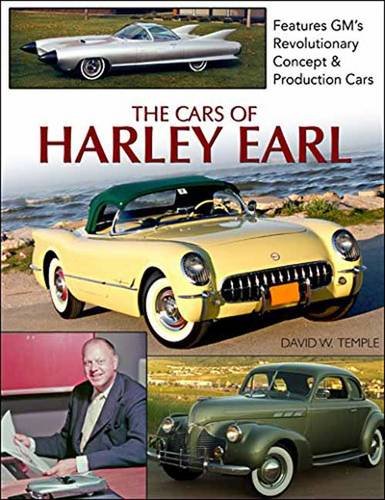
At 6-foot, 3-inches tall, Harley Earl was an imposing figure, but his true stature lies in his towering talent for automotive design and styling. Over his 50-year career, he created as well as collaborated on the most innovative, bold, technologically advanced cars made by General Motors. As a titan of American auto design, the cars he helped create are still celebrated today. And as an enduring legacy, he inspired a generation of engineers, designers, and stylists.
Veteran automotive historian David W. Temple has researched and unearthed the complete story of Harley Earl’s cars, his notable design achievements, and many accolades. Working as a coachbuilder at his father’s Earl Automotive Works in Hollywood, California, the young Earl learned his trade. After styling the 1927 LaSalle for GM president Alfred P. Sloan, Earl rose to prominence and ran the newly created department of Art and Color. Automobile design stagnated during the Depression and World War II, but the number of his contributions to the automotive world in the 1950s is staggering. When the jet age hit, he fully embraced aviation design and infused it into GM cars. The Buick Y-Job and GM Le Sabre featured many firsts in automotive design and hardware. The Y-Job’s fender extensions trailing over the doors, disappearing headlamps, flush door handles, a metal cover over the convertible top were a few innovations. When General Motors needed to show off its cars and technology, Harley Earl-designed cars were the stars of the Motorama show that toured the country from 1949 to 1961. He led the team that created the 1953 Corvette, and this iconic American sports car is still going strong today. He was involved in the creation of the 1955-1957 Chevy Bel Air, otherwise known as the Tri-Five Chevy.
Harley Earl’s drive toward bold and innovative design spurred American car design during the mid-twentieth century. His distinctive designs defined the 1950s finned cars and set American automotive design on the path it has followed into the modern era. With this in-depth examination, you learn the inside story of these remarkable cars and the man behind them.
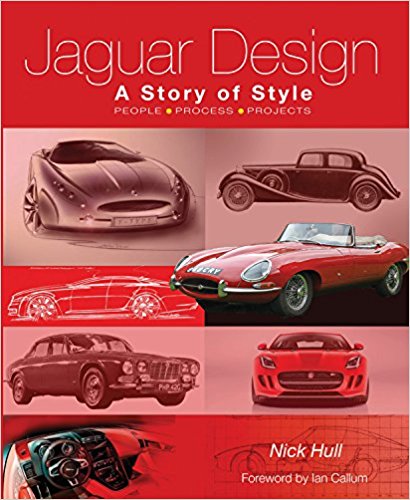
This tremendous new book tells the great Jaguar styling story in fascinating detail from the earliest Swallow motorcycle sidecars, which the fledgling firm began producing in Blackpool in 1922, through the famous icons – such as the XK 120s, the Mk 2 saloons, the E-type and the XJ6 – to the very latest stylish pre-eminent cars produced so successfully today. This is, essentially, the story of three men – company founder and owner Sir William Lyons, aerodynamicist Malcolm Sayer and current Design Director Ian Callum. But author Nick Hull, himself a former Jaguar designer, also introduces readers to the little-known men behind the scenes and how each of the great trio achieved their stunning cars. Callum, who has written the foreword, has opened doors and contributed great insights.

Great collector cars are still out there–just waiting to be found!
Sadly, there is very little reality in reality TV. That wouldn’t be so bad except for the fact that these shows are the only TV shows for the barn-find collector car aficionado.
Barn Find Road Trip is the antidote to all the manufactured collector “reality” shows. It’s a real-world, barn-find banzai run in which auto archaeologist Tom Cotter, his car collector pal Brian Barr, and photographer Michael Alan Ross embarked on a 14-day collector-car-seeking adventure with no predetermined destinations. It’s barn-find freestyle! Roaming the Southeast, they documented their day-to-day car search in photos and through stories and interviews. This trip is absolutely real and the same kind of junket any gearhead with the skills, knowledge, and time can undertake.
Cotter and company hit the road in Cotter’s 1939 Ford Woody, the kind of car that opened doors and started the conversations that revealed where interesting cars were squirreled away. The result? The discovery of over 1,000 collector cars and some of the most amazing barn-find stories Cotter has yet unearthed, all accompanied by Ross’ evocative photography. If you love stories of automotive adventure, this is the book for you!

“Antique Auto Body Leather Work for the Restorer,” by Herbert J. Butler. Find out how to restore or recreate your early auto interior. This guide reproduces period sources that show you how reupholster seats, doors, headliners, and interior trim. You will learn about the materials & tools used in the art and craft of motor trimming: motor hides, Morocco leather, imitation leather, combined leather and lining material, cloth, canvas, carpets, coach laces, stuffing materials, cushion springs, trimmers’ tools, and tufting machines. Find out the specifics of making seat cushions: the amount of fullness, the cushion pad, making the cushion borders, cushion with wood frame foundations, cushion without borders, plain trimming, the front roll, backs, side quarters, side and backs in one. You will also learn about other interior upholstery: door trimming, doors of closed bodies, front lining boards, headlining leathers, and metal beading. You can use the scaled layouts (with descriptions and instructions) for typical body types to recreate authentic leather trim for your restoration: limousine in hand-buffed leather, coach, depot wagon, landaulet, Electric Opera Bus, Brougham, Full Leather Phaeton, Limousine in Bedford Cord, Electric Brougham, the High-Wheeler, Limousine in Cloth, Runabout Roadster, and the Electric Stanhope Phaeton. You will also learn about cutting curtains, filling cushions, spring construction, and ventilating cushions. This book faithfully reproduces trim data originally appearing between 1905 and 1908 in rare American trade publications, together with relevant British material from 1924. Includes introductory text from “Motor Body Work” by Herbert J. Butler. The publisher states that “for mastery, this practically lost art requires no more than common sense, coupled with qualified instruction. 127 pages, softbound. Year Application – General.

“Antique Auto Body Wood Work for the Restorer” by C.W. Terry with Arthur Hall. This book is largely drawn from “Motor Body Building,” which was published in London and New York in 1914 – the top text in the field, written by Britain’s best experts. You will find details of the principles of design from that era, rules of thumb for proportions of particular body types, and specifications for the wood & metal typically used on bodies. Learn about principles of putting together bodies in that era, such as the selection of timber, ways of chassis framing, design for weight & accommodation, constructing the framework, kinds of joints used in framing, strength and stiffness of materials, stress & strain, panel work, iron work, mounting (to allow for movement), doors & pillars, mudguards, methods for making corners in wood, and much more. The authors give detailed instructions for creating design drawings from the side elevation, cant board (side seen from top), the chassis line, sweeps, proportion in seating, and what makes a good design. Includes illustrations, diagrams, drawing, design and construction of body types, including: Limousine, Limo with quarter windows, limo with fishtail back, limo with round quarters, Cabriolet, Convertible two-seater, Touring (Torpedo), Landaulet, Landaulet with quarter windows, flush side body, and detachable Tonneau (convertible 2-4). 127 pages, softbound . Own this hard-to-find information on a golden age of automobiles.

Mercedes-Benz 300SL Racing Cars 1952-1953 (Ludvigsen Library Series)
Introduction by Karl Ludvigsen. In 1952 Mercedes-Benz astonished the world with its 300SL sports-racing cars; sleek coupes with their startling gullwing doors. Based on the 300S production model installed in a radical tubular space frame, the 300SL was a tour de force of light-weight aerodynamic design. While the later production 300SL has been well chronicled, the 1952 racing model is less well appreciated.
Based on extensive unpublished photography at the Mille Miglia, Berne, Nurburgring and Le Mans, superbly and intimately captured by Rodolfo Mailander, this book will portray the amazing achievements of these tough cars and their epic victories at Le Mans and in the Carrera Panamericana. Rare Daimler-Benz archive photos also show the prototype, never raced, designed and built for the 1953 season. Every fan of racing and Mercedes-Benz will relish the pictorial revelations of this book.
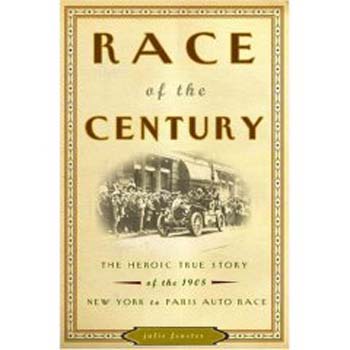
“17 men, 6 cars, and a 21,000-mile race across 3 continents
On the morning of February 12, 1908, six cars from four different countries lined up in Times Square, surrounded by a frenzied crowd. The men who competed in the New York to Paris auto race were an international roster of personalities: a charismatic Norwegian outdoorsman, a witty French nobleman, a pair of Italian sophisticates, an aristocratic German army officer, and a cranky mechanic from Buffalo, New York. At a time when most people had never seen an automobile, these adventurous men set their course over mountain ranges, through Arctic freeze, and desert heat. There were no gas stations, no garages, and no replacement parts in case of emergency.
Two men rose to the top. Ober-lieutenant Hans Koeppen, a rising officer in the Prussian army, led the German team in their canvas-topped 40-horsepower Protos. His amiable personality belied a core of sheer determination, and by the race’s end, he had won the respect of even his toughest critics. His counterpart on the U.S. team was George Schuster, a blue-collar mechanic who led the Americans in their lightweight 60-horsepower Thomas Flyer. A born competitor, Schuster battled Koeppen until the very end. Ultimately the German and the American would be left alone in the race, fighting the elements, exhaustion, and each other until the winning car’s glorious entrance into Paris, on July 30, 1908.”
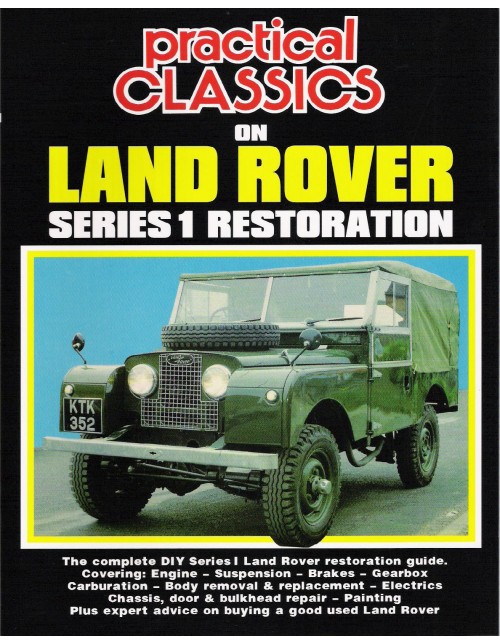
This book is the complete DIY Series 1 Land Rover restoration guide. The first section of this book covers a low-cost rolling-rebuild for those not wishing to do a full restoration. Part two covers a total restoration program. The book covers the engine, suspension, brakes, gearbox, carburetion, body removal & replacement, electrics, chassis, doors & bulkhead repair, and painting, plus expert advice on buying a good used Land Rover.
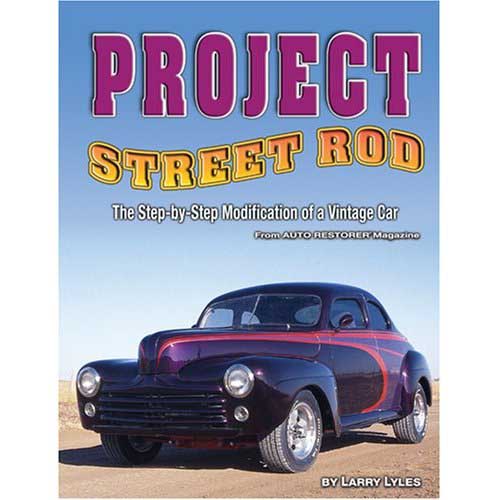
Project Street Rod is a complete guide to restoring a vintage car, written by auto-restoration guru Larry Lyles, a regular contributor to Auto Restorer magazine. In this detailed 21-chapter volume, Lyles walks the car owner through every step of the modification, from the disassembly of the car and to the finish touches, all with detailed instructions. Lyles transforms a beat-up 1946 Ford into a car the “looks nice, is very dependable, and is decked out with many of the [necessary] modern-day trappings.”
The title of each chapter is straightforward and tells the restorer exactly which step Lyles is explaining. The contents includes: beginning the disassembly, exterior and interior, and taking proper measurements of each component; installing the front suspension; installing the engine; shocks, spring and metal lines; floor pan installation, “suicide” doors, chopping the top, completing the top chop, seats, air-conditioning, and brake pedal; first project mock-up; working with body filler; color selection; new parts and fresh primer; ordering critical parts; the final clear coats; buildup; interior trim; headliner and center console; and finishing touches.
Each step in every chapter is photographed as the author progresses along, with captions to spell out exactly what has to happen. The book offers helpful advice about choice of tools and tips to make even beginners feel confident about tackling the many steps involved. With nearly forty years experience in repairing, rebuilding, and restoring classic cars (areetnd lots of unclassic ones like this 1946 Ford!), Lyles emphasizes the reader’s need to organize his or her project by determining the course of the project, researching suppliers, making lists of parts and their conditions, creating spreadsheets of estimated and actual costs, and photographing each component as a reference for later in case the restoration goes off track. Each chapter ends with a “notes” page for the reader to record his or her progress, making this manual a practical workbook as well. When the reader gets to the final pages of the book and reads the sections “Starting Up” and “The Walk Around,” there will be a true sense of accomplishment. An appendix of part suppliers and an index complete the book.
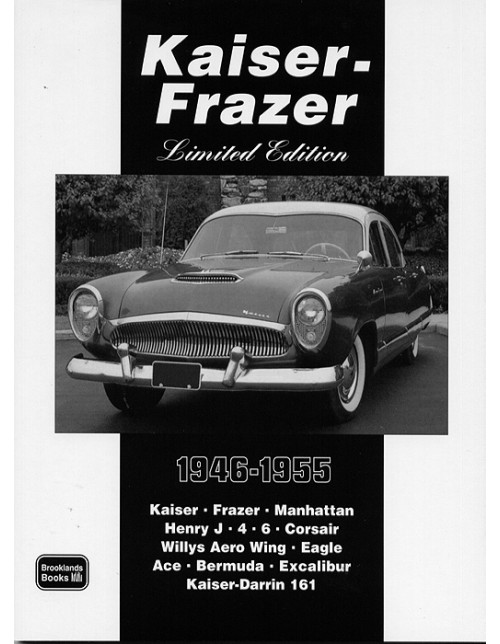
The Kaiser-Frazer automotive adventure would have to go down in history as one of the greatest lost causes of all time. Born out of the optimism of victory in World War II, the two magnates pooled their resources to take on the Establishment in Detroit. That they gambled and lost is now history and the automobile world is the richer for their efforts. Both Henry Kaiser and Joe Frazer had made a fortune out of armament supplies for the war and decided to tackle General Motors, Ford and Chrysler head-on once the conflict was over. As Preston Tucker found out to his cost, this was not something to take lightly. Starting with a clean sheet of paper they chose well-known designer Howard Darrin to style their cars, both would be essentially the same apart from some trim items. From an engineering point of view, although they considered such technically advanced ideas as front-wheel drive, torsion bar suspension and unit construction, they opted to follow the convention as established by the rest of the American motor manufacturers, that is, a body-on-frame with front engine and rear wheel drive. Only the aforementioned Tucker chose to be the maverick. Where the rest of Detroit’s offerings were merely warmed over pre-war cars, with the exception of Studebaker, the Kaiser and Frazers were the first of a new breed as far as styling was concerned. Darrin successfully predicted in 1946 the coming slab-sided style that would emerge internationally in 1950 as the style of the future. K-F was also a pioneer in America of the fibreglass bodied sports car when in 1953 they released the unusually-styled Kaiser-Darrin with its sliding doors. Needless to say the conservative American buyers did not warm to that! K-F even pioneered the hatchback concept with their Traveller range, another feature that was ahead of its time. By the mid-50s with plummeting sales and mounting losses K-F joined forces with Willys Overland which doubled their range of vehicles on offer but it was not long before car production was moved to South America where it continued for many years. Today we have the legacy of Joe and Henry and their automobiles and in particular the Kaiser-Darrin sports car of which few have survived. Including are road tests, new model intros plus historical articles. Models covered: Manhattan, four- & six-cylinder Henry Js & Corsair, Willys Aero Wing, Ace, Eagle, Bermuda, Excalibur & Kaiser-Darrin 161 sportscar.






















